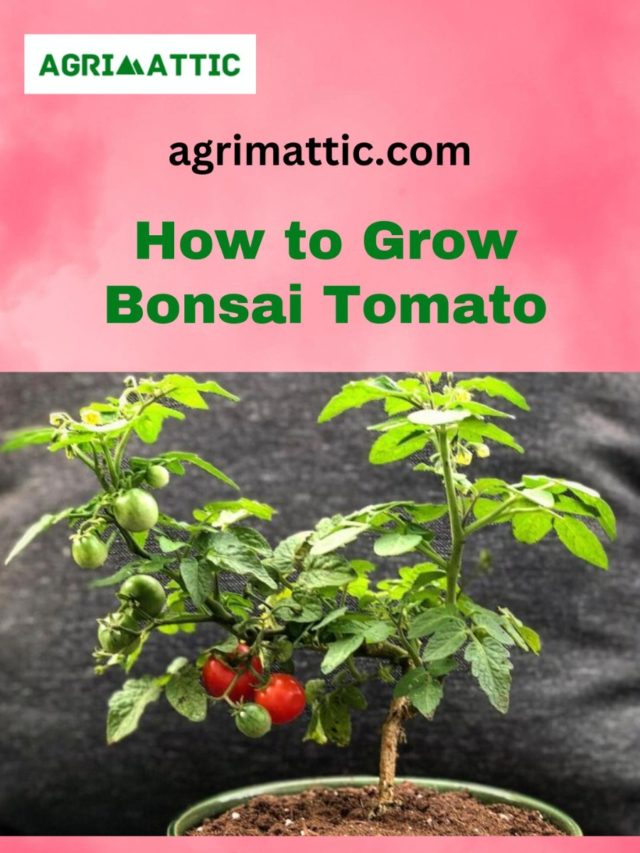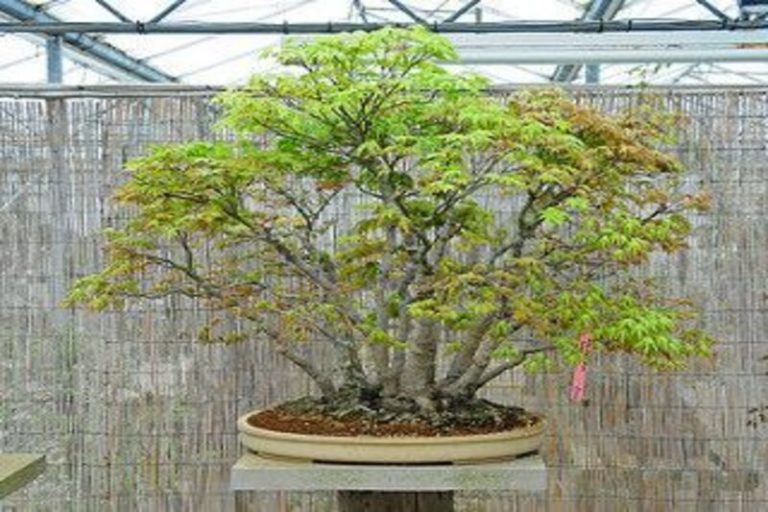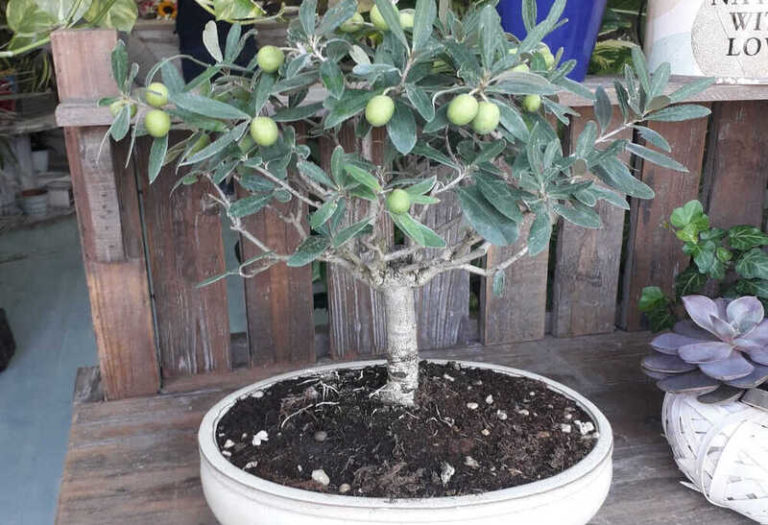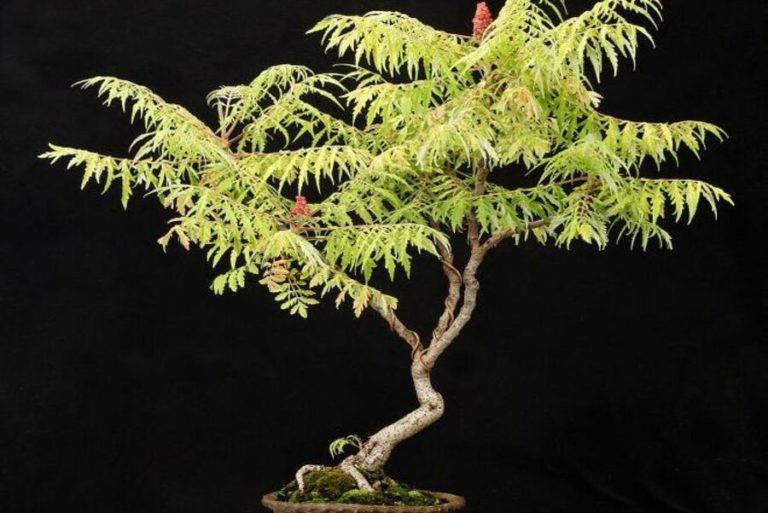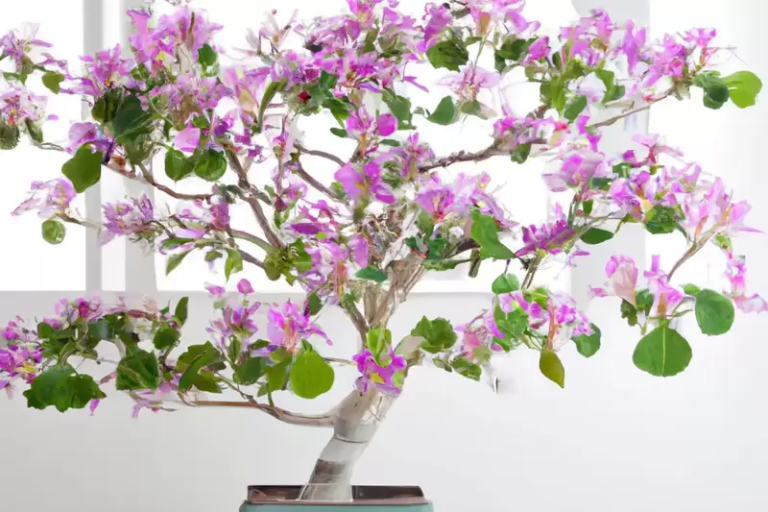Bonsai Tomato : A Unique and Delicious Addition to Your Home Garden
Bonsai Tomato is a miniature version of a regular tomato plant that is grown for its aesthetic appeal and convenience. These tiny trees can be grown in small spaces and are perfect for apartment dwellers or those with limited outdoor space. In this article, we will discuss the history, types, growing, benefits, designing, styling, care, and maintenance of Bonsai Tomato in simple language.
What is Bonsai Tomato?
Bonsai Tomato is a miniature version of a regular tomato plant that is grown for its aesthetic appeal and convenience. These tiny trees can be grown in small spaces and are perfect for apartment dwellers or those with limited outdoor space. They are similar to regular tomato plants in terms of fruit production and growth patterns but are much smaller in size.
History and Origins of the Bonsai Tomato
Miniature plants were produced in ancient China and Japan for their beauty and symbolism, which is where the practice of growing Bonsai Tomatoes can be traced back to. The Japanese term bonsai, literally “planted in a container,” refers to the centuries-old technique of cultivating and sculpting miniature trees. In the 12th century, the Japanese nobility were exposed to bonsai, a practice that originated in China.
The practice of growing miniature plants was eventually adopted by bonsai enthusiasts, who started growing miniature fruit trees, including tomato plants. Today, Bonsai Tomato are a popular hobby among gardeners who appreciate their unique features and versatility.

Types of Bonsai Tomato
There are various varieties of Bonsai Tomato plants, each with its own distinct qualities. Here are a few popular types:
Cherry Tomato Bonsai: This is one of the most popular types of Bonsai Tomato and is known for its small, sweet cherry tomatoes.
Beefsteak Tomato Bonsai: This variety of Bonsai Tomato is known for its large, meaty tomatoes and is often used for cooking.
Yellow Pear Tomato Bonsai: As the name suggests, this Bonsai Tomato produces small, yellow pear-shaped tomatoes that are sweet and flavorful.
Roma Tomato Bonsai: This variety of Bonsai Tomato is known for its oblong shape and is commonly used for making sauces.
Grape Tomato Bonsai: Similar to cherry tomatoes, this variety produces small, sweet tomatoes that are shaped like grapes.
Bonsai Tomatoes are a popular option among home cultivators and bonsai enthusiasts due to their distinctive flavor and appearance.
Bonsai Tomato and its Symbolism
Bonsai Tomato, like other types of bonsai, are steeped in symbolism and tradition. The art of bonsai is often associated with patience, discipline, and a deep respect for nature.
In Japanese culture, the bonsai tree frequently represents harmony, balance, and serenity. Growing and shaping a bonsai tree requires a great deal of care and attention, which is viewed as a metaphor for cultivating interior calm and mindfulness.
Bonsai Tomato, in particular, represents the beauty and complexity of nature in a small, manageable form. It is a reminder that even in small and confined spaces, nature can thrive and produce abundant fruits. The tiny tomatoes produced by Bonsai Tomato plants are also seen as a symbol of abundance and fertility.
Growing Bonsai Tomato is a means for many gardeners and bonsai enthusiasts to interact with nature and appreciate its beauty and complexity in a unique and manageable form.
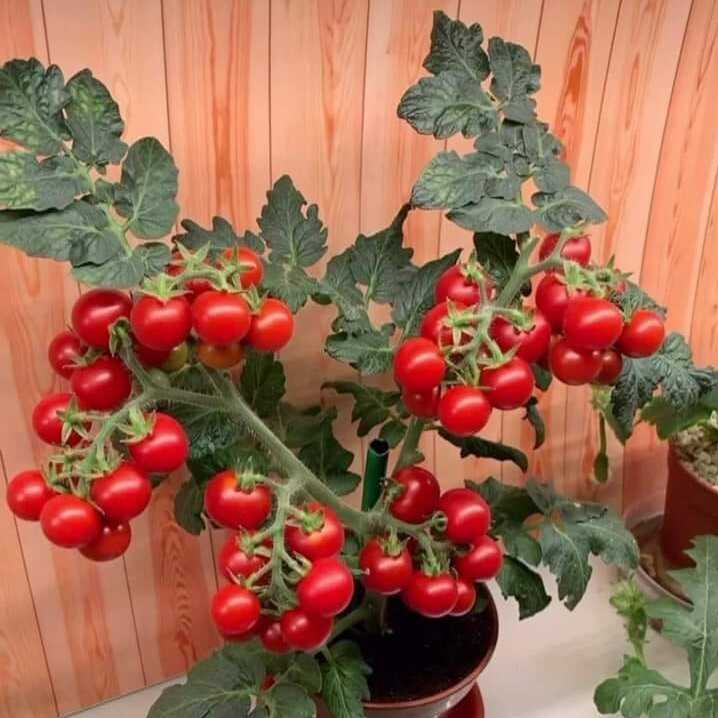
Characteristics of the Bonsai Tomato
Bonsai Tomatoes are a popular option among home cultivators and bonsai enthusiasts due to their unique characteristics. Here are some notable characteristics of Bonsai Tomato:
Size: Bonsai Tomato plants are small, with a height that typically ranges from 6 to 12 inches.
Fruit production: Despite their small size, Bonsai Tomato plants can produce a significant amount of fruit. Cherry and grape tomato varieties are particularly productive.
Compact growth: Bonsai Tomato plants have a compact growth habit, with branches that grow close to the trunk. This makes them ideal for growing in small containers or on windowsills.
Adaptability: Bonsai Tomato plants are tolerant of a variety of growth conditions and can flourish both indoors and out.
Ornamental value: Bonsai Tomato plants are prized for their ornamental value, with their small fruits and compact growth habit making them an attractive addition to any home or garden.
Overall, Bonsai Tomato is a versatile and distinctive plant that combines the aesthetics of bonsai with the yield of tomato plants.
How to Grow Bonsai Tomato
Growing Bonsai Tomato is relatively easy and straightforward, and can be done by following these steps:
Choose a variety: There are numerous Bonsai Tomato varieties available, including cherry and grape tomatoes. Choose a variety that thrives in your climate and under your growing conditions.
Choose a container: Typically, bonsai tomato plants are cultivated in tiny containers, such as bonsai pots or plastic pots. Choose a container that is the correct size and has adequate drainage openings for your plant.
Prepare the soil: Utilize a soil mixture that drains well and is abundant in organic matter. Bonsai Tomato plants prefer soil with a pH between 6.0 and 6.8.
Plant the seedling: Plant the seedling in the container, making sure to bury it to the same depth as it was in the original container. Water the plant thoroughly after planting.
Provide adequate light: Bonsai Tomato plants require at least 6–8 hours of direct sunlight per day. If you are growing the plant indoors, place it near a sunny window or use grow lights.
Water regularly: Bonsai Tomato plants require regular watering to keep the soil moist but not waterlogged. Water the plant when the soil surface feels dry to the touch.
Fertilize regularly: Bonsai Tomato plants require regular fertilization to promote healthy growth and fruit production. Use a balanced, water-soluble fertilizer every two weeks during the growing season.
Prune as needed: Bonsai Tomato plants require regular pruning to maintain their compact shape and promote fruit production. Prune any branches that are growing too long or too close to the trunk.
By following these steps, you can successfully grow and maintain a healthy Bonsai Tomato plant.
Benefits of the Bonsai Tomato
There are several benefits to growing Bonsai Tomato plants, including:
Compact size: Bonsai Tomato plants are small and compact, making them ideal for small spaces, such as balconies, patios, and windowsills.
Decorative: Bonsai Tomato plants are not only functional, but also decorative. Their compact size and beautiful fruits make them an attractive addition to any space.
Fresh produce: Bonsai Tomato plants provide fresh, homegrown produce that is free from harmful pesticides and chemicals.
Educational: Growing Bonsai Tomato plants is a great way to teach children about gardening, nature, and where their food comes from.
Easy to grow: Bonsai Tomato plants are relatively easy to grow, even for beginners. With proper care and maintenance, they can provide a bountiful harvest.
Overall, growing Bonsai Tomato plants is a fun and rewarding hobby that provides numerous benefits. Whether you are an experienced gardener or a beginner, Bonsai Tomato plants are a great choice for anyone looking to grow their own fresh produce in a small space.
Styling and Design of the Bonsai Tomato
Bonsai Tomato plants can be styled and designed in a variety of ways to suit individual preferences. Here are some tips for styling and designing Bonsai Tomato plants:
Choose a container: Bonsai Tomatoes can be cultivated in various containers, including traditional bonsai pots, ceramic containers, and even recycled containers such as cans or canisters.
Choose a variety: There are several varieties of Bonsai Tomato plants available, each with its own unique growth habit and fruit size and color. Choose a variety that suits your preferences and growing conditions.
Prune regularly: Pruning is an important part of styling and designing Bonsai Tomato plants. Regular pruning helps control the plant’s size and shape, and encourages bushy growth and fruit production.
Support the plant: Bonsai Tomato plants may require support as they grow, especially as the fruits begin to develop. Use stakes or trellises to support the plant and prevent it from toppling over.
Add decorative elements: Bonsai Tomato plants can be decorated with various elements, such as rocks, moss, or miniature figurines, to add visual interest and personality to the plant.
Overall, the styling and design of Bonsai Tomato plants is a creative process that allows for individual expression and experimentation. With a little creativity and imagination, Bonsai Tomato plants can be transformed into beautiful and unique works of living art.
How to Care for and Maintain Bonsai Tomato
Proper care and maintenance are crucial for the health and growth of Bonsai Tomato plants. Here are some tips for caring for and maintaining your Bonsai Tomato:
Watering: To flourish, Bonsai Tomato plants require consistent and even moisture. Ensure that the soil is evenly moist but not drenched by watering the plant completely and profoundly. Avoid entirely drying out the soil or allowing the plant to remain in standing water, as this can cause root rot.
Lighting: To develop and bear fruit, Bonsai Tomato plants must receive ample sunlight. Place the plant in a location that receives a minimum of six hours of direct sunlight per day.
Temperature and Humidity: Bonsai Tomato plants prefer warm, humid conditions. Keep the plant in a location with a consistent temperature of around 70–80 °F and a relative humidity of around 50–70%.
Fertilizing: To support robust growth and produce production, Bonsai Tomato plants must be fertilized regularly. During the growing season, apply a balanced, water-soluble fertilizer every two to three weeks.
Pruning: Regular pruning is important for maintaining the size and shape of Bonsai Tomato plants, as well as encouraging bushy growth and fruit production. Prune the plant regularly, removing any dead or damaged branches, and pinching back the tips of new growth to encourage branching.
Pest Control: Aphids and spider mites are susceptible to infesting Bonsai Tomato plants. Regularly inspect the plant for signs of infestation, and if necessary, apply an insecticide or pesticide as soon as possible.
Repotting: Bonsai Tomato plants should be repotted every one to two years to provide fresh soil and encourage healthy growth. Repot the plant in the spring, using a well-draining potting mix and a container that is slightly larger than the current one.
By following these care and maintenance tips, you can ensure that your Bonsai Tomato plant remains healthy, vibrant, and productive.
Bonsai Tomato Care Sheet
| Aspect | Care Tips |
| Watering | Water the plant deeply and thoroughly, ensuring that the soil is evenly moist but not waterlogged. Do not let the soil dry out. |
| Lighting | Place the plant in a bright, sunny location with at least six hours of direct sunlight per day. |
| Temperature and Humidity | Keep the plant in a location with a consistent temperature of around 70-80°F and a relative humidity of around 50-70%. |
| Fertilizing | Use a balanced, water-soluble fertilizer every two to three weeks during the growing season. |
| Pruning | Pruning is necessary to keep the plant’s size and form while also fostering bushy growth and fruit output. |
| Pest Control | Regularly inspect the plant for signs of infestation, and treat promptly with an appropriate insecticide or pesticide if necessary. |
| Repotting | Repot the plant in the spring, using a well-draining potting mix and a container that is slightly larger than the current one. |
Conclusion
Bonsai Tomato is an excellent additions to any home or garden due to their unique features and versatility. With the right care and maintenance, Bonsai Tomato can thrive and add beauty and nutrition to any space.
FAQ:
Q: What is a Bonsai Tomato?
A: A Bonsai Tomato is a miniature version of a tomato plant that is grown and trained to have a specific shape and size.
Q: How is a Bonsai Tomato different from a regular tomato plant?
A: The Bonsai Tomato is smaller in size and is pruned and trained to grow in a specific shape, such as a mini tree or a bush. It is also grown in a small container, limiting its growth and root development.
Q: Can I eat the tomatoes produced by a Bonsai Tomato plant?
A: Yes, the tomatoes produced by a Bonsai Tomato plant are edible and can be harvested once they reach maturity.
Q: Do Bonsai Tomato plants require different care than regular tomato plants?
A: Yes, Bonsai Tomato plants require specific care and maintenance, such as regular pruning and fertilizing, and proper watering and lighting conditions. They are also grown in a small container, which requires careful monitoring of soil moisture levels.
Q: Can I grow a Bonsai Tomato plant indoors?
A: Yes, Bonsai Tomato plants can be grown indoors as long as they receive adequate light and are provided with appropriate care. They are well-suited for small spaces and can be grown on a windowsill or balcony.
Also Read:


